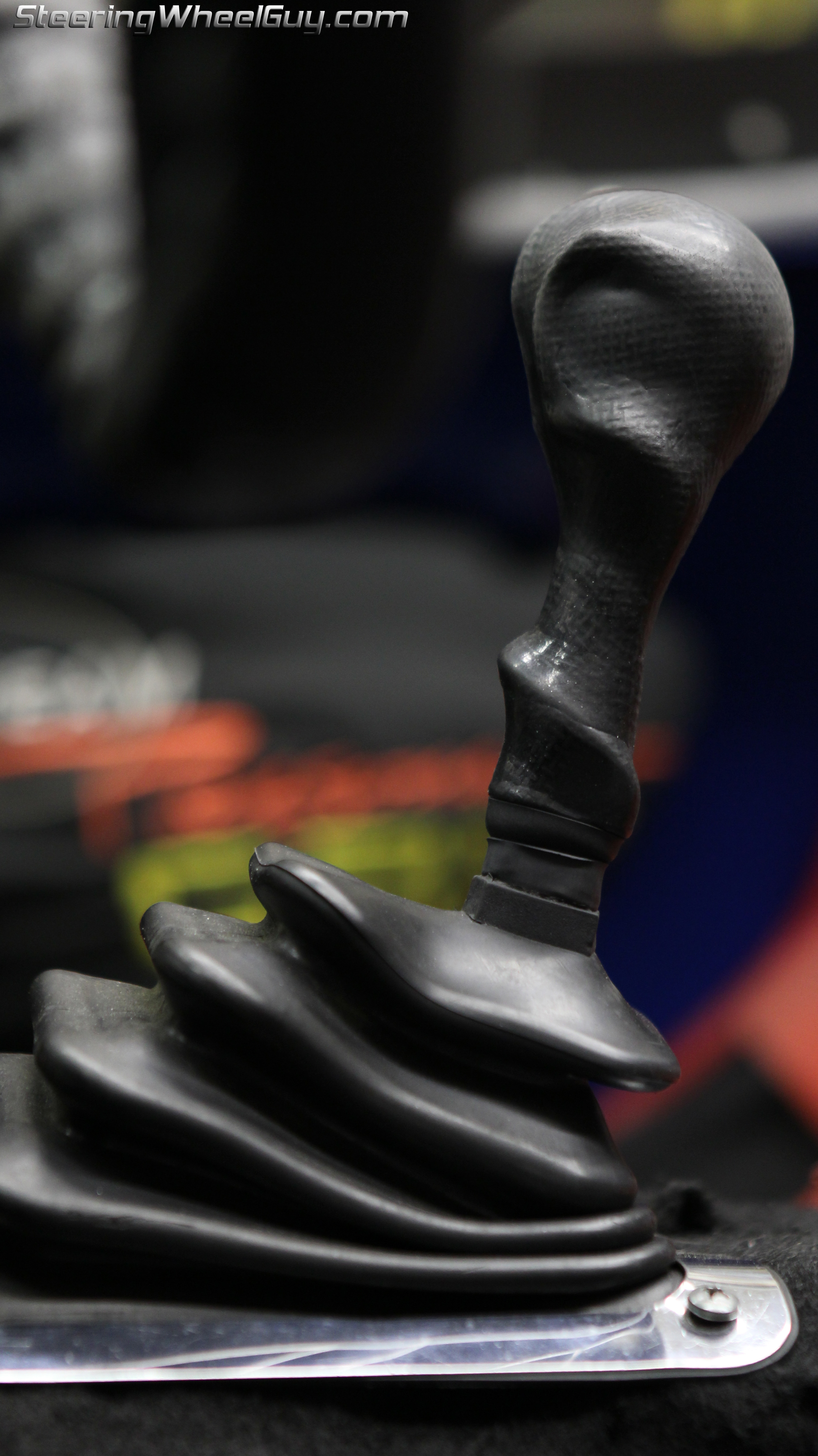Shifter Ergonomics 101
Ergonomics Adapts the Environment to the Individual…OR THE TASK.
When driving with adjustable Human-Machine Interfaces (HMIs), there are two types of racers: Adapters and Adjusters.
Adapters will take what you give them and simply adjust to it…so long as it’s a good, basic design. This is the design used in endurance racing when multiple drivers change seats.
Adjusters like to play with PersonaGrip’s composite thermoplastic interface to get that last 5 or 10% out of it. In my experience there was no better adjuster than Jacques Villeneuve. He could feel a design change of just 2mm in between sessions.
Shifters are not Exempt from Ergonomic Fine Tuning.
The shifter on Dellis’ Beck Lister Corvette #007 Lightweight has been remolded countless times. After 12 years of development, this last mold is clearly the best…by far.
It has accommodations for 3 basic moves: Palm-Down finger tip 1-2/3-4 shifting, 2-3/3-2 Shifting (4-speed), and a two-position Pistol Grip shifting similar to that found in an early Chrysler muscle-car.
Palm-Down
This design is mainly used for the 1-2 and 3-4 shifts around town. There’s a split on the top surface that flows into two vertically oriented concavities on the front face to either side of the split as it drops down for the index and middle fingers. The pocket on the left face nearest the driver is for the last joint of the thumb to hook into for more aggressive shifts in any direction.
2-3 Shift
In the old days of drag racing, nothing could beat the Hurst Competition-Plus 4-Speed shifters for the 2-3 shift. The 2-3 shift was THE shift. If you missed it, you could blow the motor. But when you nailed it, the car would lurch ahead since monster traction was almost always assured after 1st got things toasty in back.
The wing on the left side below the thumb pocket is designed so your thumb can hook under it to guarantee a solid, no-miss cross-gate shift. The top edge of the thumb pocket also assures that the head of the index finger’s metacarpal bone won’t slip past. (https://en.wikipedia.org/wiki/Metacarpus#/media/File:Metacarpus_%28left_hand%29_dorsal_view.png)
Pistol Grip Wing
The wide concave radius below the thumb flange facing the driver guarantees a maximum frictional surface contact area for the 2-3 shift mentioned above. The wing below that concavity at the base of the shifter above the boot is the second position that is used mainly for lazy traffic shifting when choking up on the shifter to facilitate a shorter throw that is moved only by wrist action.
2-1 & 4-3 Downshifts
The rear face of the shifter is rounded, and features a long concave vertical surface along the backside. This maximizes frictional surface contact area for the open-palm, straight forward downshifts. A basic “knob shape” is retained at the top on the backside, and this is designed to fit into the pocket of the palm.
3-2 Downshift
If done “pistol grip style” the vertical wing on the front face (it splits the index and middle finger during the fingertip 1-2 shift), also facilitates a non-slip leveraging surface for the last digit of the middle finger to hook into when breaking the gate during the 3-2 downshift.
If the shifter is grabbed in a more traditional style from the top, the middle finger’s last digit hooks below the “knob” and slips into a slight groove molded into the bottom of the thumb pocket’s front edge on the driver’s side.
Conclusion
If all this sounds confusing… Welcome to the highly nuanced world of driver ergonomics!
…basically, you just gotta feel it.
One last thing:
In case anyone is wondering how you service the shifter with what looks like a completely encapsulated surface from top-to-bottom:
There are 4 Phillips screws holding down the boot that are easily removed to allow access to the two bolts used to remove the lever…the knob, lever, and boot never get divorced.

